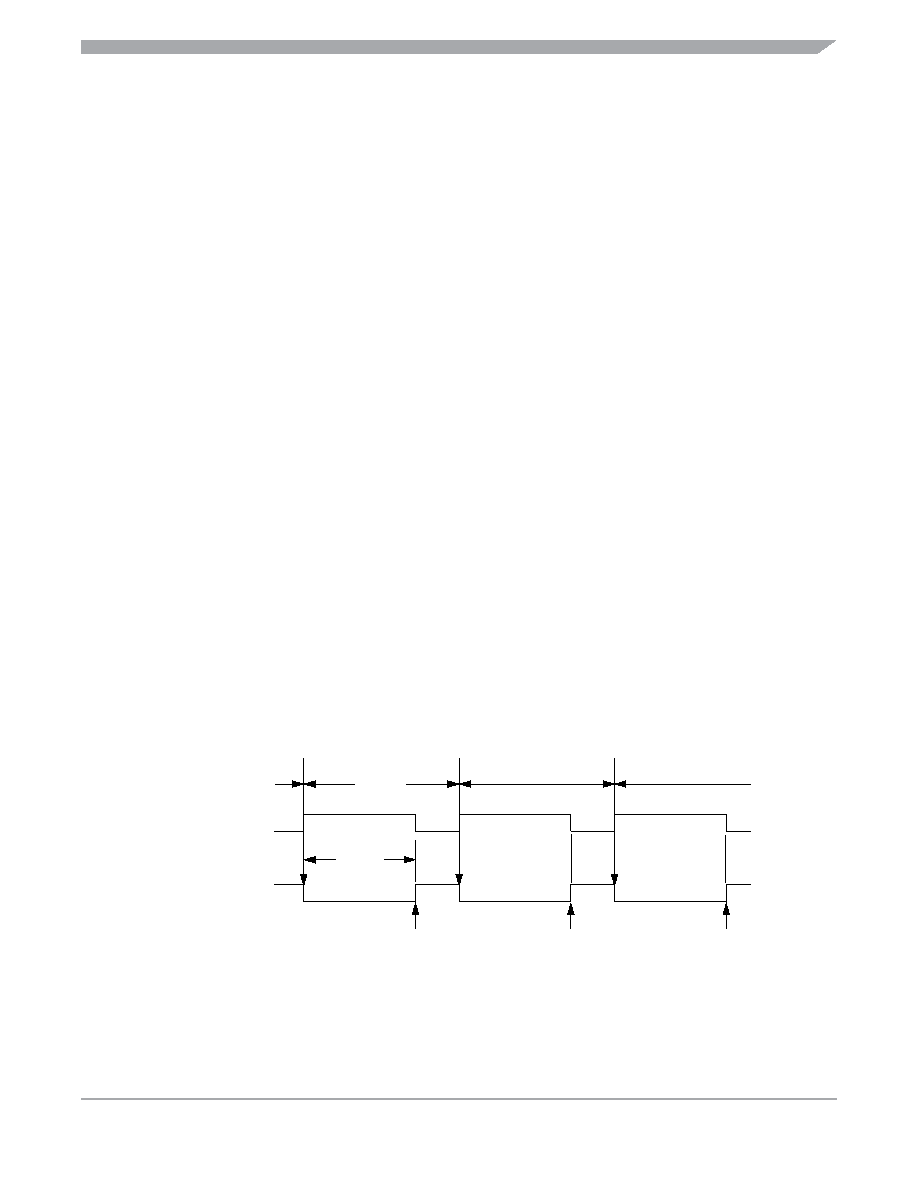- 您現(xiàn)在的位置:買賣IC網(wǎng) > PDF目錄25642 > S908QC16CDRER (FREESCALE SEMICONDUCTOR INC) 8-BIT, FLASH, 8 MHz, MICROCONTROLLER, PDSO28 PDF資料下載
參數(shù)資料
| 型號: | S908QC16CDRER |
| 廠商: | FREESCALE SEMICONDUCTOR INC |
| 元件分類: | 微控制器/微處理器 |
| 英文描述: | 8-BIT, FLASH, 8 MHz, MICROCONTROLLER, PDSO28 |
| 封裝: | 4.40 MM, 1.20 MM HEIGHT, 0.65 MM PITCH, LEAD FREE, MO-153AE, TSSOP-28 |
| 文件頁數(shù): | 105/274頁 |
| 文件大?。?/td> | 3183K |
| 代理商: | S908QC16CDRER |
第1頁第2頁第3頁第4頁第5頁第6頁第7頁第8頁第9頁第10頁第11頁第12頁第13頁第14頁第15頁第16頁第17頁第18頁第19頁第20頁第21頁第22頁第23頁第24頁第25頁第26頁第27頁第28頁第29頁第30頁第31頁第32頁第33頁第34頁第35頁第36頁第37頁第38頁第39頁第40頁第41頁第42頁第43頁第44頁第45頁第46頁第47頁第48頁第49頁第50頁第51頁第52頁第53頁第54頁第55頁第56頁第57頁第58頁第59頁第60頁第61頁第62頁第63頁第64頁第65頁第66頁第67頁第68頁第69頁第70頁第71頁第72頁第73頁第74頁第75頁第76頁第77頁第78頁第79頁第80頁第81頁第82頁第83頁第84頁第85頁第86頁第87頁第88頁第89頁第90頁第91頁第92頁第93頁第94頁第95頁第96頁第97頁第98頁第99頁第100頁第101頁第102頁第103頁第104頁當(dāng)前第105頁第106頁第107頁第108頁第109頁第110頁第111頁第112頁第113頁第114頁第115頁第116頁第117頁第118頁第119頁第120頁第121頁第122頁第123頁第124頁第125頁第126頁第127頁第128頁第129頁第130頁第131頁第132頁第133頁第134頁第135頁第136頁第137頁第138頁第139頁第140頁第141頁第142頁第143頁第144頁第145頁第146頁第147頁第148頁第149頁第150頁第151頁第152頁第153頁第154頁第155頁第156頁第157頁第158頁第159頁第160頁第161頁第162頁第163頁第164頁第165頁第166頁第167頁第168頁第169頁第170頁第171頁第172頁第173頁第174頁第175頁第176頁第177頁第178頁第179頁第180頁第181頁第182頁第183頁第184頁第185頁第186頁第187頁第188頁第189頁第190頁第191頁第192頁第193頁第194頁第195頁第196頁第197頁第198頁第199頁第200頁第201頁第202頁第203頁第204頁第205頁第206頁第207頁第208頁第209頁第210頁第211頁第212頁第213頁第214頁第215頁第216頁第217頁第218頁第219頁第220頁第221頁第222頁第223頁第224頁第225頁第226頁第227頁第228頁第229頁第230頁第231頁第232頁第233頁第234頁第235頁第236頁第237頁第238頁第239頁第240頁第241頁第242頁第243頁第244頁第245頁第246頁第247頁第248頁第249頁第250頁第251頁第252頁第253頁第254頁第255頁第256頁第257頁第258頁第259頁第260頁第261頁第262頁第263頁第264頁第265頁第266頁第267頁第268頁第269頁第270頁第271頁第272頁第273頁第274頁

Functional Description
MC68HC908QC16 MC68HC908QC8 MC68HC908QC4 Data Sheet, Rev. 5
Freescale Semiconductor
193
output after the TIM1 overflows. At each subsequent overflow, the TIM1 channel registers (0 or 1) that
control the output are the ones written to last. T1SC0 controls and monitors the buffered output compare
function, and TIM1 channel 1 status and control register (T1SC1) is unused. While the MS0B bit is set,
the channel 1 pin, T1CH1, is available as a general-purpose I/O pin.
Channels 2 and 3 can be linked to form a buffered output compare channel whose output appears on the
T1CH2 pin. The TIM1 channel registers of the linked pair alternately control the output.
Setting the MS2B bit in TIM1 channel 2 status and control register (T1SC2) links channel 2 and channel 3.
The output compare value in the TIM1 channel 2 registers initially controls the output on the T1CH2 pin.
Writing to the TIM1 channel 3 registers enables the TIM1 channel 3 registers to synchronously control the
output after the TIM1 overflows. At each subsequent overflow, the TIM1 channel registers (2 or 3) that
control the output are the ones written to last. T1SC2 controls and monitors the buffered output compare
function, and TIM1 channel 3 status and control register (T1SC3) is unused. While the MS2B bit is set,
the channel 3 pin, T1CH3, is available as a general-purpose I/O pin.
NOTE
In buffered output compare operation, do not write new output compare
values to the currently active channel registers. User software should track
the currently active channel to prevent writing a new value to the active
channel. Writing to the active channel registers is the same as generating
unbuffered output compares.
16.3.4 Pulse Width Modulation (PWM)
By using the toggle-on-overflow feature with an output compare channel, the TIM1 can generate a PWM
signal. The value in the TIM1 counter modulo registers determines the period of the PWM signal. The
channel pin toggles when the counter reaches the value in the TIM1 counter modulo registers. The time
between overflows is the period of the PWM signal.
As Figure 16-3 shows, the output compare value in the TIM1 channel registers determines the pulse width
of the PWM signal. The time between overflow and output compare is the pulse width. Program the TIM1
to clear the channel pin on output compare if the polarity of the PWM pulse is 1 (ELSxA = 0). Program
the TIM1 to set the pin if the polarity of the PWM pulse is 0 (ELSxA = 1).
Figure 16-3. PWM Period and Pulse Width
PERIOD
PULSE
WIDTH
OVERFLOW
OUTPUT
COMPARE
OUTPUT
COMPARE
OUTPUT
COMPARE
POLARITY = 1
(ELSxA = 0)
POLARITY = 0
(ELSxA = 1)
T1CHx
相關(guān)PDF資料 |
PDF描述 |
|---|---|
| MC908QC16CDRE | 8-BIT, FLASH, 8 MHz, MICROCONTROLLER, PDSO28 |
| MC908QC16CDTE | 8-BIT, FLASH, 8 MHz, MICROCONTROLLER, PDSO16 |
| S912XDP512F0VPV | 16-BIT, FLASH, 40 MHz, MICROCONTROLLER, PQFP112 |
| MC312XDP512J1MPVR | 16-BIT, FLASH, 40 MHz, MICROCONTROLLER, PQFP112 |
| MC912XDP512F0MPVR | 16-BIT, FLASH, 40 MHz, MICROCONTROLLER, PQFP112 |
相關(guān)代理商/技術(shù)參數(shù) |
參數(shù)描述 |
|---|---|
| S908QC16CDSE | 制造商:Freescale Semiconductor 功能描述:MCU 8BIT HC08 CISC 16KB FLASH 3.3V/5V 20TSSOP - Bulk |
| S908QC16CDSER | 制造商:Freescale Semiconductor 功能描述:MCU 8BIT HC08 CISC 16KB FLASH 3.3V/5V 20TSSOP - Tape and Reel |
| S908QC16CDTE | 制造商:Freescale Semiconductor 功能描述: 制造商:Freescale Semiconductor 功能描述:MCU 8BIT HC08 CISC 16KB FLASH 3.3V/5V 16TSSOP - Bulk |
| S908QC16CDTER | 制造商:Freescale Semiconductor 功能描述:MCU 8BIT HC08 CISC 16KB FLASH 3.3V/5V 16TSSOP - Tape and Reel |
| S908QC16CDXER | 制造商:FREESCALE 制造商全稱:Freescale Semiconductor, Inc 功能描述:Microcontrollers |
發(fā)布緊急采購,3分鐘左右您將得到回復(fù)。